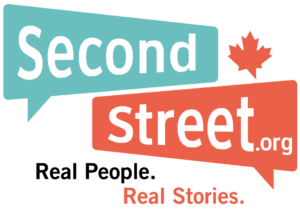SUN NEWS COLUMN: Government-Run Tim Hortons & Restaurants Losing Millions
How can you lose money running a Tim Hortons?
Get the government to operate it.
New research by SecondStreet.org found that a pair of hospitals in Canada lost over $353,000 through owning and operating their own Tim Hortons franchises between 2017-19. One location was at the Windsor Regional Hospital in Ontario and the other at the Saint John Regional Hospital in New Brunswick.
While $353,000 isn’t a lot of money compared to overall health care spending in Canada, those are tax dollars that could have been spent on health services for patients. With the amount of money these two hospitals lost running their own Tim Hortons outlets, governments could have provided patients with roughly 500 additional MRI scans.
When you look at total losses by all government-run restaurants and cafeterias in hospitals across Canada, SecondStreet.org identified $12 million in red ink over the same two-year period. (Note: Our analysis focussed on food and beverages sold to the public, not food that is provided to patients complimentary)
For perspective, $12 million is roughly equivalent to the cost of providing MRI scans to an NHL arena full of people. And keep in mind, several provinces provided incomplete data so losses are likely quite a bit higher.
When COVID-19 emerged in Canada, governments postponed hundreds of thousands of surgeries, diagnostic scans and appointments with specialists. The Canadian Medical Association Journal recently noted that 148,364 surgeries were postponed between March and June in Ontario alone. Extrapolate that figure across Canada, adding in postponed diagnostic scans and appointments with specialists, and it’s easy to see how COVID-19 created an enormous backlog – in a system that was already struggling before the pandemic.
With that unprecedented backlog, it’s more important than ever for hospitals to find ways to save money. It’s a small start, but stopping the bleeding at government-run hospitals restaurants and cafeterias, along with many other changes, could free up even more resources to help patients get the care they need.
Consider Jackie Herrera’s case in Alberta. The young patient hurt her neck skiing and struggled with finding treatment in Alberta. At one point the government told her it would take a year just to see a neurologist. Unwilling to lose even more years of her life to pain and suffering, Herrera packed her bags and flew to Germany for treatment.
A camera person SecondStreet.org hired to help film her story told us he was facing a year-long wait to receive an MRI scan. A consultant we hired for a recent project told us something similar. Long health care waiting list stories are all around us, and yet the government has been busy losing millions through selling doughnuts and snacks in hospitals.
Fortunately, a very simple solution could address this problem. Instead of losing millions through running restaurants and cafeterias, governments could simply rent the space out to private restaurants.
The Victoria General Hospital in Winnipeg lost $186,851 at its cafeteria in 2011-12. After renting the space out to a private restaurant, however, it earned $25,591 the following year in rent. Ultimately, that meant more funds could be spent helping patients.
Again, addressing this situation won’t address all the problems in our health care system. But when combined with many other decisions, it could help improve patient care.
Colin Craig is the president of SecondStreet.org, a new Canadian think tank.
This column was published in the November 6, 20202 edition of Sun newspapers (Toronto Sun, Ottawa Sun, Winnipeg Sun, Edmonton Sun and Calgary Sun)
You can help us continue to research and tell stories about this issue by making a donation or sharing this content with your friends. Be sure to sign up for our updates too!


